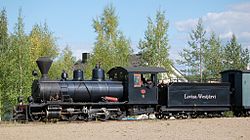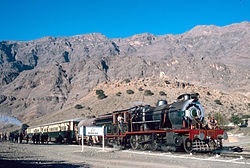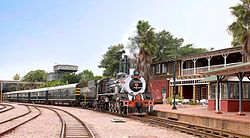



This list of heritage railways includes heritage railways sorted by country, state, or region. A heritage railway is a preserved or tourist railroad which is run as a tourist attraction, is usually but not always run by volunteers, and often seeks to re-create railway scenes of the past.
Contents
- Europe
- Austria
- Belgium
- Bosnia and Herzegovina
- Czech Republic
- Denmark
- Finland
- France
- Germany
- Greece
- Hungary
- Italy
- Latvia
- Luxembourg
- Netherlands
- Norway
- Poland
- Portugal
- Republic of Ireland
- Romania
- San Marino
- Serbia
- Slovakia
- Spain
- Sweden
- Switzerland
- United Kingdom and Crown dependencies
- North America
- Canada
- United States
- Mexico
- Barbados
- St. Kitts
- South America
- Argentina
- Brazil
- Chile
- Ecuador
- Colombia
- Asia
- Mainland China
- Hong Kong
- India
- Indonesia
- Israel
- Japan
- Pakistan
- Taiwan
- Africa
- South Africa
- Tunisia
- Australia
- Australia 2
- New Zealand
- See also
- References
- External links







![Historic train at the Cansano railway station, along the now tourist Sulmona-Isernia railway [it] in Italy. Stazione Cansano.jpg](http://upload.wikimedia.org/wikipedia/commons/thumb/f/fa/Stazione_Cansano.jpg/250px-Stazione_Cansano.jpg)























